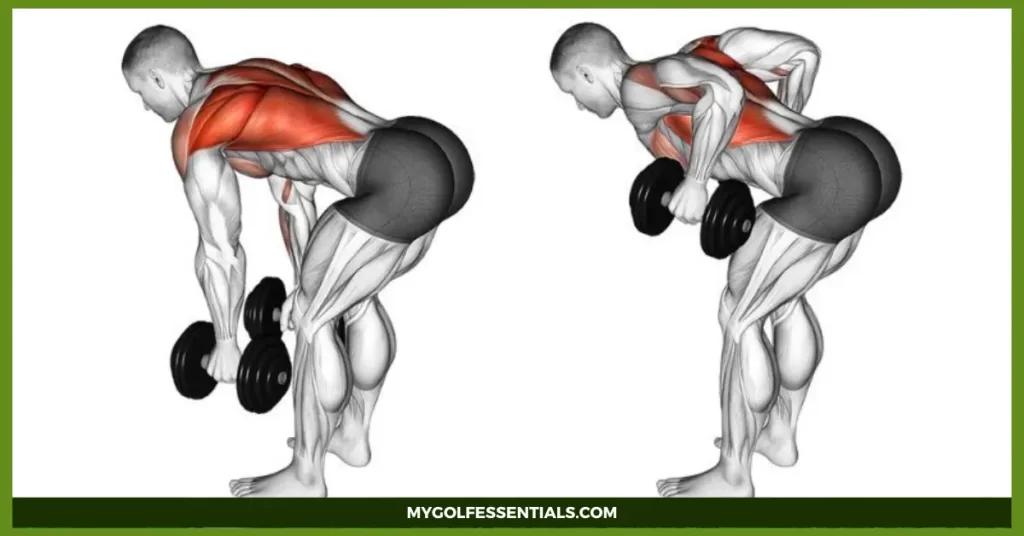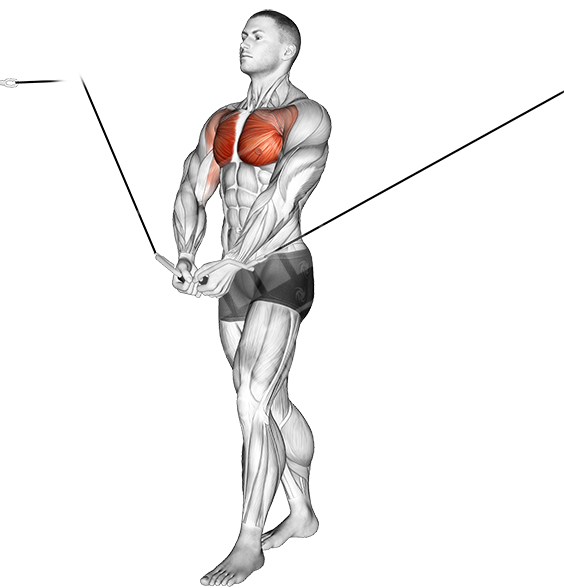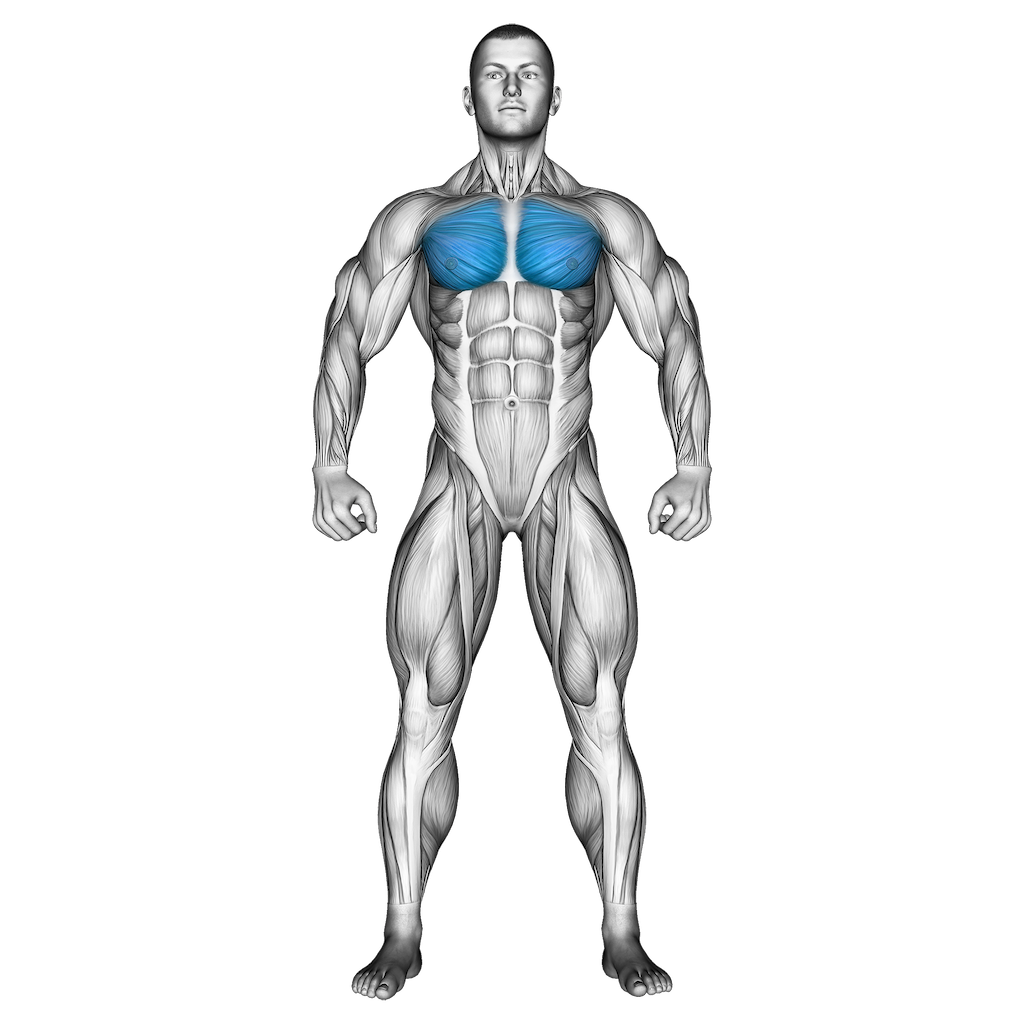
If you’re a fan of strength training and looking to build up your lat muscles, then you’ve come to the right place! Whether you’re just getting started with bodyweight exercises or looking to incorporate more challenging workouts into your routine, there is plenty of information available about lats-targeting exercises that can help increase range of motion & mobility.
In this blog post, we will provide an overview of some effective LAT exercises that anyone can do from home – no equipment required!
Introducing lat exercises
Lat exercises, targeting the latissimus dorsi muscles in your back, are a critical component of any balanced strength training regimen. These muscles are among the largest in your body and play a significant role in various daily activities, from lifting and pulling to stabilizing your body during movement.
Properly performed lat exercises can enhance your overall strength and posture, reduce the risk of back injuries, and contribute to a well-defined physique. They can range from bodyweight exercises like pull-ups and chin-ups to weight-lifting movements such as bent-over rows and lat pull-downs. It’s crucial to engage in these exercises correctly to avoid injury and maximize benefits.
Benefits of lat exercises for a strong back
Lat exercises, targeting the latissimus dorsi muscles, hold significant value in developing a robust, well-defined back. First, these workouts can enhance your posture by strengthening your back muscles, thereby reducing the risk of slouching and, subsequently, back pain.
Second, lat exercises can contribute to overall core strength, playing a pivotal role in maintaining body balance and stability. Lastly, a strong back can vastly improve your performance in other physical activities as it serves as the central anchor for most of the body’s movements.
Hence, incorporating lat exercises into your regular fitness regime is a wise investment towards holistic physical health.
Tips for proper form and technique when performing lat exercises
Maintaining proper form and technique is paramount when performing lat exercises to ensure effectiveness and prevent injuries. Here are some tips:
- Mind-Muscle Connection: Always remember the purpose of the exercise is to target your lat muscles. Concentrate on the muscle being worked on, and make sure it’s contracting during each rep.
- Control Your Movements: Avoid rushing the movements. Control both the lifting and lowering phases of the exercise. Fast, uncontrolled movements can lead to injuries and diminish the effectiveness of the workout.
- Keep Your Back Straight: A common mistake during lat exercises is rounding the back. Keeping your back straight and your core engaged protects your spine and allows for better muscle engagement.
- Avoid Overloading Weights: While it’s beneficial to gradually increase weight for progression, avoid overloading weights at the expense of form.
- Proper Warm-Up and Cool-Down: Always start your workout session with a good warm-up to prepare your muscles for the exercise. After the session, cool down with stretches to enhance muscle recovery and flexibility.
Different types of lat exercises and their variations
Lat exercises, short for latissimus dorsi exercises, primarily focus on the large muscles in your back and can significantly enhance your strength and physique. One popular lat exercise is the Pull-up, a challenging movement that demands strength and control.
Variations can include the Weighted Pull-up, where additional weight is added to increase the difficulty, and the Negative Pull-up, where the emphasis is on the lowering phase of the movement.
Another effective lat exercise is the Bent-over Row. This compound exercise involves the use of dumbbells, barbells, or a cable machine, engaging not just your lats but also your biceps, shoulders, and core. Variations include the Single-arm Bent-over Row and the Inverted Row, requiring different levels of strength and stability.
Finally, the Lat Pulldown is a staple in many fitness routines. It is performed on a cable machine, allowing for a steady and controlled movement. Variations include the Wide-grip Lat Pulldown, which puts more emphasis on the outer lats, and the Close-grip Lat Pulldown, which targets the lower lats more intensively.
By incorporating these exercises and their variations into your workout regimen, you can develop a stronger and more sculpted back. Remember, it’s essential to perform these exercises with proper technique and control for optimal results and to prevent injury.
Where are the lats muscles, and what do they do
The latissimus dorsi, commonly referred to as the ‘lats,’ are large muscles situated in the back. Extending from the lower half of the spine and hip bone up through the armpit and shoulder blade, these fan-shaped muscles are responsible for a range of movement in the shoulder.
They play a crucial role in actions such as pulling movements, swimming, rowing, and even in the motion of bringing the arms down from an elevated position. By strengthening your lats, you can improve overall upper body strength, enhance your body’s V shape, and boost your performance in various sports and exercises.
Best lat exercises with dumbbells and barbells
When striving for a well-defined back, incorporating lat exercises with dumbbells and barbells into your routine is crucial. Here are some of the most effective exercises:
- Bent-Over Rows: This compound exercise targets your lats, along with other muscles in your back. Stand with your feet shoulder-width apart, bend your knees slightly, and hinge at the waist. Hold a barbell or dumbbell in your hands, keeping your back straight, and pull the weights towards your chest.
- Single-Arm Dumbbell Rows: Place one knee and the same side hand on a bench for support while your other foot is planted on the ground. Hold a dumbbell in your free hand, let it hang straight down, then pull it up to your chest.
- Barbell Deadlifts: Stand with your feet hip-width apart and pick up a barbell, keeping your back straight—engage your lats as you lift the barbell off the ground.
- Pull-Ups: Although this requires a pull-up bar, it’s a powerful bodyweight exercise that works your lips intensely. Hold the bar with an overhand grip and pull your body upwards until your chin is above the bar.
Dumbbell Row
The Dumbbell Row is a highly effective lat workout that not only targets the muscles in your back but also enhances core stability while engaging the shoulder, biceps, and triceps muscles.
To execute this exercise, position yourself on a bench parallel to your body, placing one hand and knee on the bench while the opposite foot remains on the ground. The dumbbell should be resting on the ground next to the bench, close to your foot.
Reach down with your free hand and grasp the dumbbell, ensuring your palm faces you. It’s crucial to maintain a straight back throughout the exercise, activating your core muscles.
Row the dumbbell towards your side, pulling your elbows back towards your hips and upwards. The elbow should barely surpass your torso line. Lower the dumbbell until your arm is fully extended. This completes one repetition.
Dumbbell Pullover
The dumbbell pullover is a fantastic lat exercise that also targets your chest, giving you a comprehensive upper-body workout. This classic bodybuilding exercise engages multiple muscle groups, ranging from your pecs to your abs, lats, and even your triceps.
To perform a dumbbell pullover, you’ll need a flat bench and a dumbbell. It’s advisable to start with a lighter weight to familiarize yourself with the movement and assess your range of motion.
- Begin by setting a dumbbell upright on a flat bench, ensuring it stays securely in place as you position yourself.
- Lie perpendicularly on the bench with only your upper back/shoulders resting on it. Your feet should be flat on the floor with your hips slightly lower than the bench. Your head should be off the bench.
- Grab the top of the dumbbell with both hands, holding it straight over your chest with your arms extended. Maintain a slight bend at your shoulders. Your palms should be pressing against the underside of one side of the dumbbell.
- While keeping your arms straight, slowly lower the dumbbell in an arc behind your head. Engage your core and focus on working your chest and back muscles.
- Lower the dumbbell until it reaches roughly the same height as your head.
- Bring the dumbbell back to the starting position, keeping your arms extended and your core engaged.
- Pause at the top for a second before repeating the movement for the prescribed number of repetitions.
Landmine Row
The landmine row is a barbell-pulling exercise that is ideal for building significant upper-body strength and muscle mass. It is particularly effective for strengthening the lats muscles and shoulders but also works the core and chest muscles considerably. Here’s how to perform it:
- Set up the barbell in a landmine setup. Ensure there is adequate weight loaded on one end.
- Stand over the barbell with one foot on either side. Your body should be facing towards the weighted end of the barbell.
- Bend down and grip the barbell with both hands. Your knees should be slightly bent, and your back should be straight to avoid any potential injury.
- Inhale deeply and brace your core, glutes, and grip. Subsequently, pull the barbell upwards towards your chest.
- Try to squeeze your shoulder blades together at the top of the movement. Pause for a second and tense your back and shoulder blades as tightly as you can.
- Slowly lower the weight back to the starting position. Be mindful to keep the motion controlled and steady.
- Exhale at the bottom of the range of motion.
- Repeat the above steps for the desired number of reps.
Bent Over Row
The Bent Over Row is a quintessential lat exercise, favored by many fitness enthusiasts for its ability to enhance strength in the upper and lower back. It places substantial emphasis on the lats and shoulders while also recruiting the muscles in the glutes and hamstrings.
To ensure an effective and safe workout, maintaining the correct stance during this exercise is crucial. Overemphasis on the lower back can lead to potential health issues and reduce the effectiveness of this lat exercise.
Here is a step-by-step guide on how to perform the Bent Over Row:
- Start by positioning either a barbell or a pair of dumbbells in front of you.
- Stand with your feet positioned shoulder-width apart.
- Bend your knees slightly and lean forward from the hips.
- Keep your back straight and neck in a neutral position.
- Reach out and grab the weights; your hands should be slightly wider than your shoulders.
- Now, bend your elbows and row the weights upwards towards the chest.
- During the exercise, ensure to keep your core engaged.
- Hold the weights at the top for a second, then slowly lower them back down until your arms are fully extended.
- It’s important to remember slow, controlled movements are key to executing a safe and efficient exercise routine.
- Repeat these steps for the desired number of repetitions.
Pendlay Row
The Pendlay Row is an exceptional exercise that targets primarily the latissimus dorsi (lats) as well as other muscle groups in both the upper and lower back. This exercise was named after its inventor, Glenn Pendlay, an eminent American weightlifting coach. Strength athletes often incorporate Pendlay Rows into their training regimen because of their efficacy in developing these crucial back muscles.
To perform a Pendlay Row, first position a barbell on the ground in front of you. Bend down until your upper body is parallel to the ground. The bar should be approximately a fist’s distance away from your shins, and your knees should be slightly bent. Take a slightly wider grip on the bar, ensuring you engage your lower back and midline.
Then, with control and power, pull the bar up explosively towards the area between your upper stomach and lower chest, maintaining the same hip angle as when you started the exercise. Your upper back should tighten as you pull. Maintain a strong core and lower the barbell back down to the floor in a controlled manner. This part of the exercise also works your back muscles as you lower the barbell back down to its initial position.
Always keep an eye on your form; good posture is essential throughout the movement. If needed, adjust the position of your back, hips, and feet and repeat the exercise. The Pendlay Row is an excellent tool to add to your training arsenal, particularly if your goal is to strengthen and develop your lats and overall back musculature.
Best lat exercises with machines
Lat Pulldown
The Lat Pulldown is a highly effective exercise that targets the large muscles in your back, known as the latissimus dorsi or “lats.” Similar to pull-ups, the difference lies in that instead of pulling your body upwards, you perform this exercise seated, pulling an external weight down in a similar motion.
Here’s how to do it:
- Start by facing the machine and finding a comfortable seat. Ensure your back is straight, your core engaged, and your feet grounded on the floor.
- Reach for the bar. It should be at a comfortable distance that requires you to almost fully stretch your arms.
- For a classic lat pulldown, grab the bar with a wide, overhand grip.
- Pull the bar down until it passes under your chin, and your hands are about shoulder height. Keep your core tight and engage your back muscles throughout this movement.
- Your elbows should stay relatively close to your sides, and your torso should remain in position.
- Pause for a second and squeeze your lats for maximum benefit.
- Bring the bar back up in a controlled manner. This motion should be slow and engage your core and back muscles throughout.
- The repetition is completed when your arms are extended overhead again.
Remember to maintain control throughout the exercise and avoid jerky movements to prevent injury. If performed correctly, lat pulldowns can be a powerful tool in your fitness arsenal to build a strong, muscular back.
Cable Row
The Cable Row exercise is specifically designed to bolster upper body strength and develop your back muscles. This exercise targets several key muscles, such as the erector spinae, rhomboids, and the lower trapezius. However, the latissimus dorsi, or ‘lats,’ receive a particularly intense workout from the cable row.
To properly execute this exercise, begin by sitting on the cable row machine with your feet firmly planted on the platform. Your legs should be slightly bent. Reach for the machine handles, maintaining a tall back posture. Ensure your shoulders align directly over your hips, your lower back is extended, and your lats are engaged.
Bend your elbows and draw your hands towards your chest. Remember to keep your back tall and lats engaged throughout this motion. Pause momentarily, then gradually extend your arms, being careful not to round your back.
Return to the initial position to complete one rep. This exercise, when performed correctly, is an excellent way to effectively train your lats.
T Bar Row
The T Bar Row exercise primarily targets your back muscles, serving as a phenomenal fitness tool designed to develop a robust, muscular back and significant pulling strength. It primarily works the latissimus dorsi, rhomboids, trapezius, and posterior deltoid muscles. Here’s how you do it:
- If you’re using a barbell, load it with your desired weight. If you’re using a machine, move to step 2.
- Position your feet shoulder-width apart behind the machine and rest your chest against the pad (if using a machine).
- Reach down and grasp the handles of the T-bar machine.
- Take a deep breath in, brace your core, activate your glutes, and grip tightly, then pull the weight towards you.
- Upon reaching the top of the movement, squeeze your shoulder blades together, pausing and holding for a second.
- Gradually lower the weight to the initial position, exhaling at the bottom of the movement.
- Repeat this process for your desired number of repetitions.
FAQs
How many repetitions should I perform?
Generally speaking, the number of reps you should do depends on your fitness goals. If your goal is to build muscle mass and strength, aim for around 8-12 repetitions per set. However, if you’re looking to primary function and increase muscular endurance, aim for sets of 15-20 reps or more.
When should I perform lat exercises?
Lat exercises can be effectively performed as part of a full-body workout routine or in isolation as part of an upper-body workout. The frequency with which you do lat exercises will depend on your lat workout individual goals; if strength and power are your main objectives, you may want to focus on lats 2-3 times per week, while if muscular endurance is your goal, then performing lat exercises 3-4 times a week could be beneficial.
What other muscles do lat exercises target?
Lat exercises such as the Pend lay Row also target the back muscles such as the erector spinae, rhomboids, and lower trapezius. They can also help increase core strength and stability, as well as improve body weight posture.
Are there any alternatives to lat exercises?
Yes! Other popular upper body wide grip pull-ups exercises that can be used to target your lats include pull-ups/chin-ups, bent-over rows, and face pulls. These exercises can all be effective tools in your training arsenal to strengthen and develop your lats and overall back musculature.
Are there any common mistakes I should avoid when doing lat exercises?
Yes, there are a few common mistakes to watch out for when performing lat exercises. These include using too much weight, not maintaining a tall posture throughout the movement, and jerky movements.
Conclusion
I hope this guide has provided you with a comprehensive overview of LAT exercises and the various benefits they have to offer. Lat exercises are an effective way to strengthen your back muscles, improve posture, and boost overall upper body strength when performed correctly.
Whether you’re looking to build muscle mass or increase muscular endurance, there’s sure to be a suitable exercise within this article that can help you achieve your goals. Keep these guidelines in mind to ensure you get the most out of your last workouts and, most importantly, stay safe!



